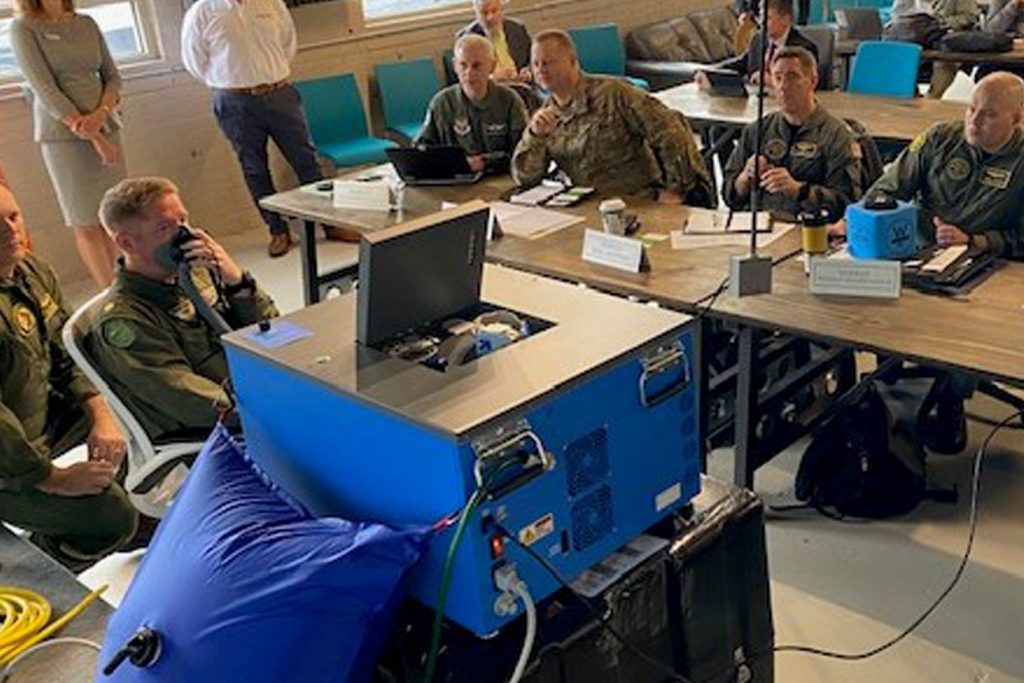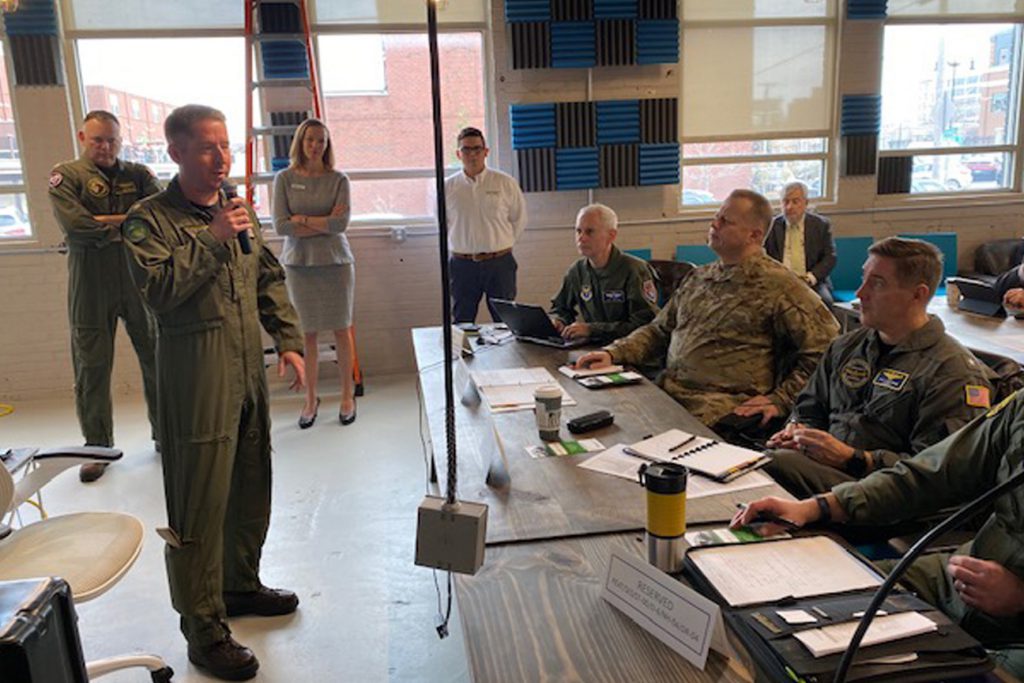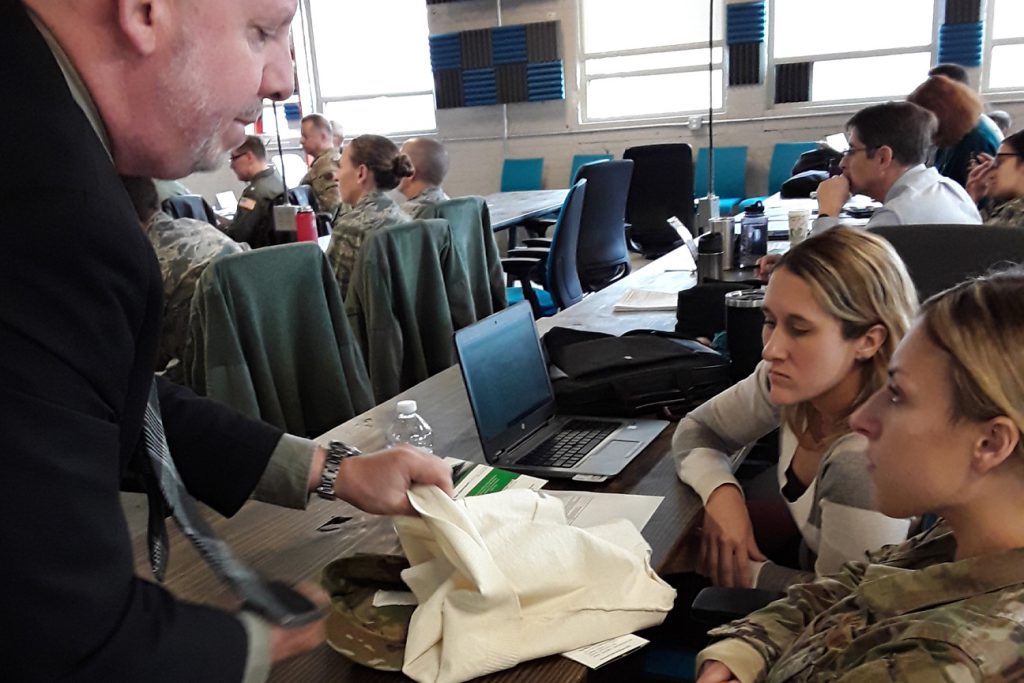“For the safety of our pilots:” AFRL hosts event aimed at fielding physiological sensors
DAYTON, Ohio – The inaugural Physiological Episodes Mitigation Technology Summit and Industry Day, hosted by the Air Force Research Laboratory’s 711th Human Performance Wing, was held Dec. 17-18 at the Wright Brothers Institute’s Small Business Hub downtown.
The event brought in over 150 participants from the Air Force, Navy and industry, all with the shared goal of discussing research and development of sensors that can gather physiological data from pilots before, during and after flight to help mitigate physiological episodes.
“Efforts surrounding this issue are really driven by the nature of the challenge,” said Brig. Gen. Gregor Leist, Air Force Physiological Episodes Action Team (PEAT) lead. “It’s a safety-critical issue, and we need to throw everything we can at this and find the root, if there is a root, for the safety of our pilots.”
The Navy began seeing an increase in physiological episodes, or PEs, starting in 2010, said Rear Adm. Fredrick “Lucky” Luchtman, Navy PEAT lead. “We started looking at the aircraft, how it was performing, how the subsystems were performing.”
Luchtman explained that the Navy spent a great deal of time instrumenting their aircraft to characterize the breathing systems and pressurization systems.
In the Air Force, there was a noted increase in the rate of physiological episodes of various types a few years later, and part of it was initially associated with the aging of the fleet, said Leist. “What really drove a lot of the Air Force activities for this was the T-6 trainer and the steep rise in air breathing-associated physiological episodes.”
By 2018, both Navy and Air Force had a Physiological Episodes Action Team, and leaders saw the opportunity to share research and data.
“We’ve been partnering continuously with the Navy, sharing data in both directions so we’re not duplicating efforts, and have the Defense Department’s best working this,” said Leist.
Using a variety of sensors to collect data from the aircraft, both Navy and Air Force teams put long hours into ensuring the aircraft systems were performing properly.
“That was the easy part,” Luchtman said. “The hard part, the whole team has discovered, is understanding how the human system is utilizing those outputs. For example, the aircraft’s oxygen system. We can tell you very accurately what that aircraft’s system is producing — the oxygen content levels, the pressures, the flows. But even when we can see that the system is performing appropriately — producing the right amount of high-quality air that’s better than even liquid oxygen — but we still get a reported physiologic episode from a pilot… We have to ask ‘What is going on?’”
In short, he reiterated, “If the aircraft is giving the pilots what they need, then what is going on in the human? We just don’t have the sensors to accurately characterize what is going on there.”
The two-day summit allowed Department of Defense officials and industry partners to exchange ideas, ask the hard questions, network on common interests, and discuss what Navy and Air Force researchers envision as a new suite of sensors designed to collect physiological data from the human. This research all has to do with what’s being delivered to the aviator, and how it’s being used in the cockpit.
“The Integrated Cockpit Sensing program aims to identify best-of-breed sensors for near-term operational implementation while defining an architecture, which will allow the Air Force to continually add or upgrade the best sensing capability to prevent and/or mitigate the effects of physiological events,” said Dr. James Christensen, AFRL team lead developing this suite of sensors. “We are considering the needs of legacy platforms while also influencing early design of new aircraft to better accommodate sensing of the pilot’s physical state and ensure their ability to fly safely and accomplish the mission.”
This PEAT team continues to use sensors and data to rule out possible root causes, but cockpit sensing remains a key gap — a gap this strong partnership continues to try to uncover.
“You could say that there are two parallel efforts going on between the Navy and Air Force, but that wouldn’t really be accurate,” said Luchtman. “It’s really one integrated effort. We have two different names, and we’re two different services, but everything we do is lock-step together. You don’t often see this level of integration. I can’t say enough about this partnership, best illustrated here in Dayton.”
“There are no barriers, no fences between organizations, and we have a continuous flow of information,” said Leist. “I’m heartened by the effectiveness of this partnership between Air Force, Navy, our international partners, and with industry.”
Both leaders and their teams of researchers agree—these are complex problems that no one entity is going to be able to solve.

Dr. Kevin Geiss, Airman Systems Directorate director, talks with Dr. David Neri, Air Force Medical Service Chief Scientist, and Col. LaFrance during the inaugural Physiological Episodes Mitigation Technology Summit and Industry Day in Dayton, Ohio, Dec. 17-18. (U.S. Air Force photo by Gina Marie Giardina)

Air Force and Navy officials watch a demonstration during the inaugural Physiological Episodes Mitigation Technology Summit and Industry Day in Dayton, Ohio, Dec. 17-18. (U.S. Air Force photo by Lt. Col. Christianne “BOS” Opresko)

Air Force and Navy officials listen to a briefing during the Physiological Episodes Mitigation Technology Summit and Industry Day in Dayton, Ohio, Dec. 17-18. (U.S. Air Force photo by Lt. Col. Christianne “BOS” Opresko)

Second Lt. Dominique O’Brien and Dr. Jennifer Martin, both with the Air Force Research Laboratory’s 711th Human Performance Wing, look at a fabric to contain sensors shown by an industry participant during the first Physiological Episodes Mitigation Technology Summit and Industry Day in Dayton, Ohio, Dec. 17-18. (U.S. Air Force photo by Gina Marie Giardina)
